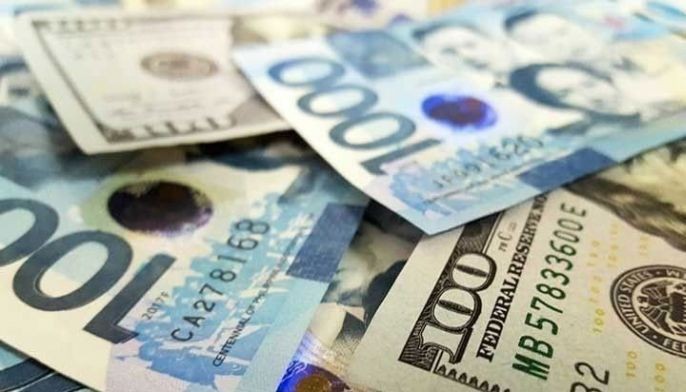MANILA, Philippines — The peso weakened further, closing yesterday at its lowest level in three-and-a-half years, due to the strong demand for US dollars to pay for rising imports as well as the impending rate hike by the US Federal Reserve next week.
The local currency shed five centavos to end at 53 to $1. This was the weakest level for the peso since it closed at 53.1 to $1 on Dec. 20, 2018.
It opened weaker at 52.97 and hit an intra-day high of 52.925. Volume jumped by 29.6 percent to $949.3 million from Thursday’s $732.62 million.
China Bank chief economist Domini Velasquez said market players are expecting the US Fed to deliver a 50-basis-point rate hike next week.
Velasquez also attributed the depreciation of the local currency to the rising value of import purchases due to soaring oil and food prices.
“This is due to both the Fed’s aggressive monetary tightening cycle and domestically, the value of import purchases is still bound to increase as oil and food prices in the world market continue to remain elevated. Hence, still more demand for dollars,” he said.
The Bangko Sentral ng Pilipinas (BSP) has also started its interest rate liftoff after it delivered a 25-bps hike last May 19, the first in more than three years or since November 2018, to curb rising inflationary pressures.
The central bank’s Monetary Board also raised its inflation forecasts to 4.6 percent instead of 4.3 percent this year and to 3.9 percent from 3.6 percent next year.
Inflation averaged 4.1 percent in the first five months of the year, exceeding the BSP’s two to four percent target, after quickening to 5.4 percent in May from 4.9 percent in April.
Michael Ricafort, chief economist at Rizal Commercial Banking Corp., said the next important resistance level is at 53.25 to 53.50 per $1 and the immediate support is at 52.70 to 52.80 per $1.
Ricafort said the weaker peso could be attributed to the slower growth in exports and in manufacturing (MISSI), and partly dragged by higher inflation in recent months.
Ricafort cited the stronger employment data with the unemployment rate at a new low of 5.7 percent since the COVID-19 pandemic started as the economy re-opened further toward greater normalcy.


